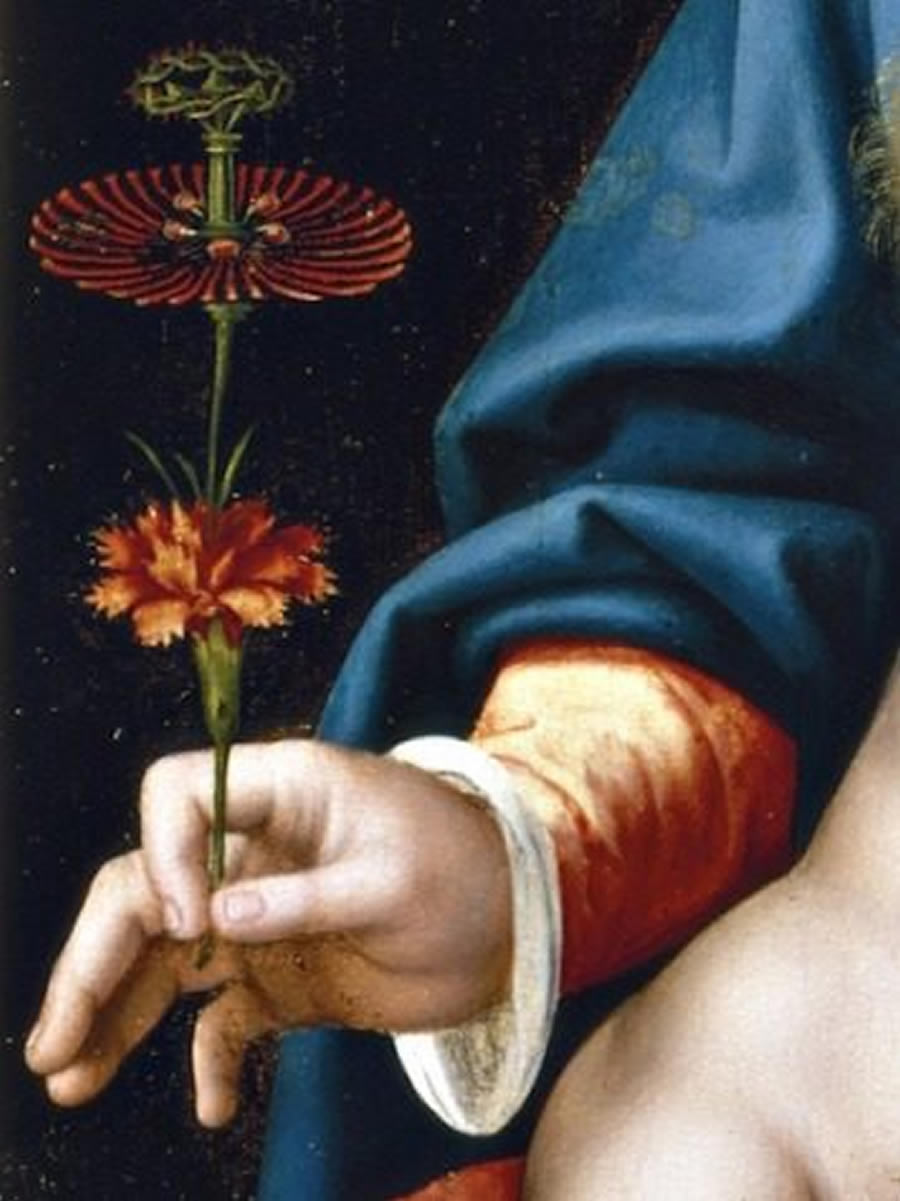FLORILEGIO
In FLORILEGIO, il discorso sul misticismo incontra il simbolismo dei fiori e il significato che essi ricoprono in pratiche religiose, artistiche o curative.
In FLORILEGIUM, the discourse on mysticism encounters the symbolism of flowers and the significance they hold in religious, artistic or healing practices.

Joos van Cleve (Kleve,1485 – Anversa,1541), Madonna con Bambino, 1530-1535, olio su tavola, 61.1×46.4 cm, Cincinnati Institute of Fine Art. Particolare.
Florilegio, dal latino florilegium – composto da flos floris “fiore” e da legĕre “cogliere” –ossia “raccolta di fiori” prende le mosse dall’attività letteraria di padre Giovanni Pozzi, sacerdote, frate cappuccino, autore di un florilegio. «Un chiuso giardino è mia sorella, mia sposa» (4:12) recita il Cantico dei Cantici in un passo da sempre associato alla Vergine Maria e alla sua purezza. Nell’Hortus Conclusus i fiori venivano prevalentemente scelti per il loro carattere simbolico legato a Maria, madre e generatrice di Gesù e dispensatrice della grazia e di tutte le virtù. Il giglio, fiore bianco, sta per la purezza, l’innocenza e la verginità; la rosa senza spine rappresenta la Sulamita mai toccata dal peccato originale; le viole, emblemi di modestia e umiltà, stanno per la promessa del Regno celeste; il bucaneve rappresenta la primavera e dunque la speranza. L’aquilegia invece ricorda la colomba dello Spirito Santo, come anche il garofano – il cui nome latino Dianthus, deriva dal greco e significa “fiore di Dio” – che per la sua forma e il suo colore è legato alla Passione.
Florilegium, a mediaeval Latin word that is a combination of flos, floris ‘flower’ and legere ‘to gather’ – i.e. ‘collection of flowers’, came into widespread use as a result of the literary activity of Father Giovanni Pozzi, priest, Capuchin friar and author of a florilegium. ‘A garden enclosed is my sister, my spouse’ (4:12) declares the Song of Songs in a passage that has always been associated with the Virgin Mary and her purity. In the Hortus Conclusus the flowers were chosen chiefly for their symbolic character linked to Mary, mother and begetter of Jesus and bestower of grace and all the virtues. The lily, a white flower, stands for purity, innocence and virginity; the rose without thorns represents the Shulamite, untouched by original sin; violets, emblems of modesty and humility, stand for the promise of the Heavenly Kingdom; the snowdrop represents spring and therefore hope. While the columbine recalls the dove of the Holy Spirit, as does the carnation – whose Latin name Dianthus, derives from Greek and means ‘flower of God’ – which is linked by its form and colour with the Passion.


